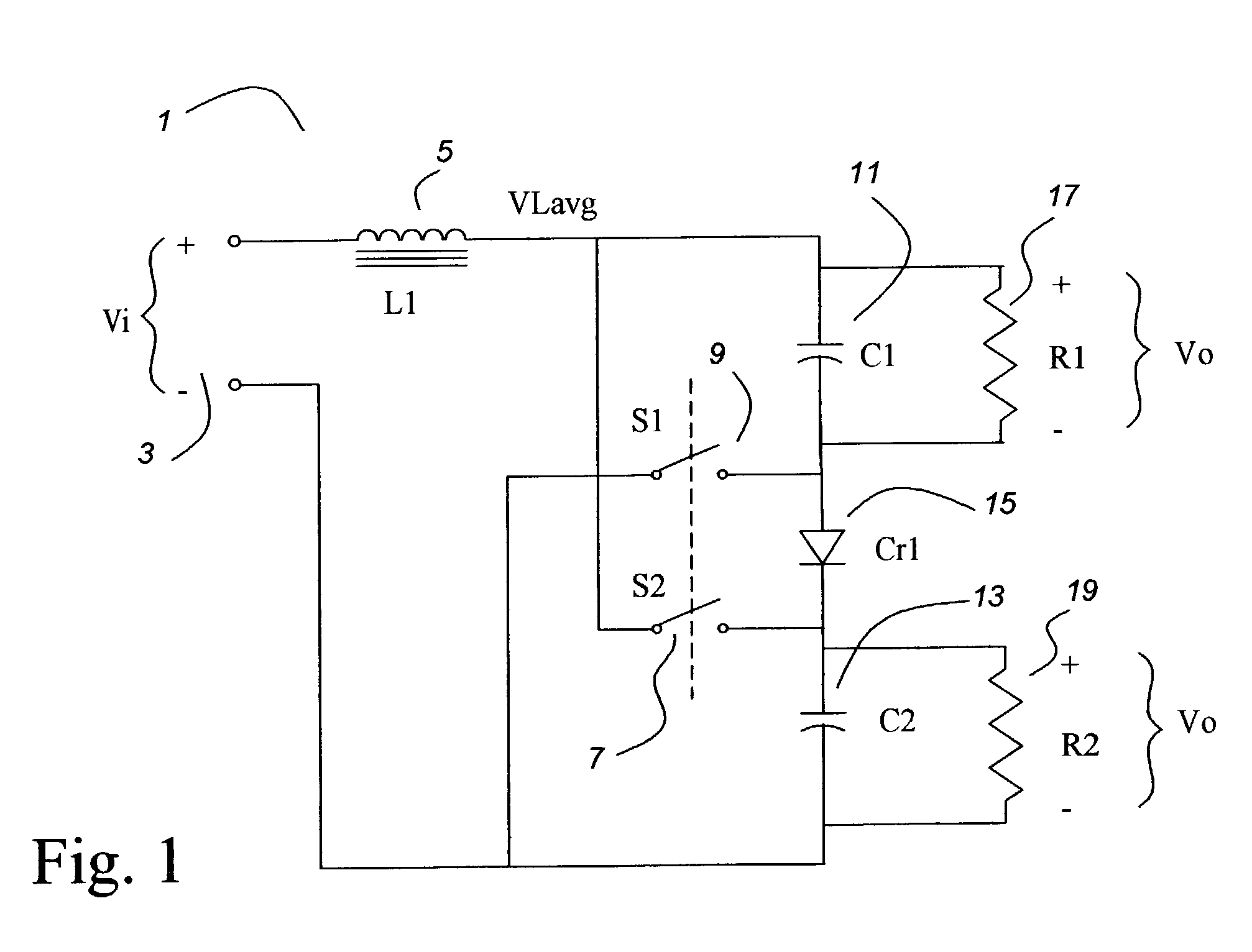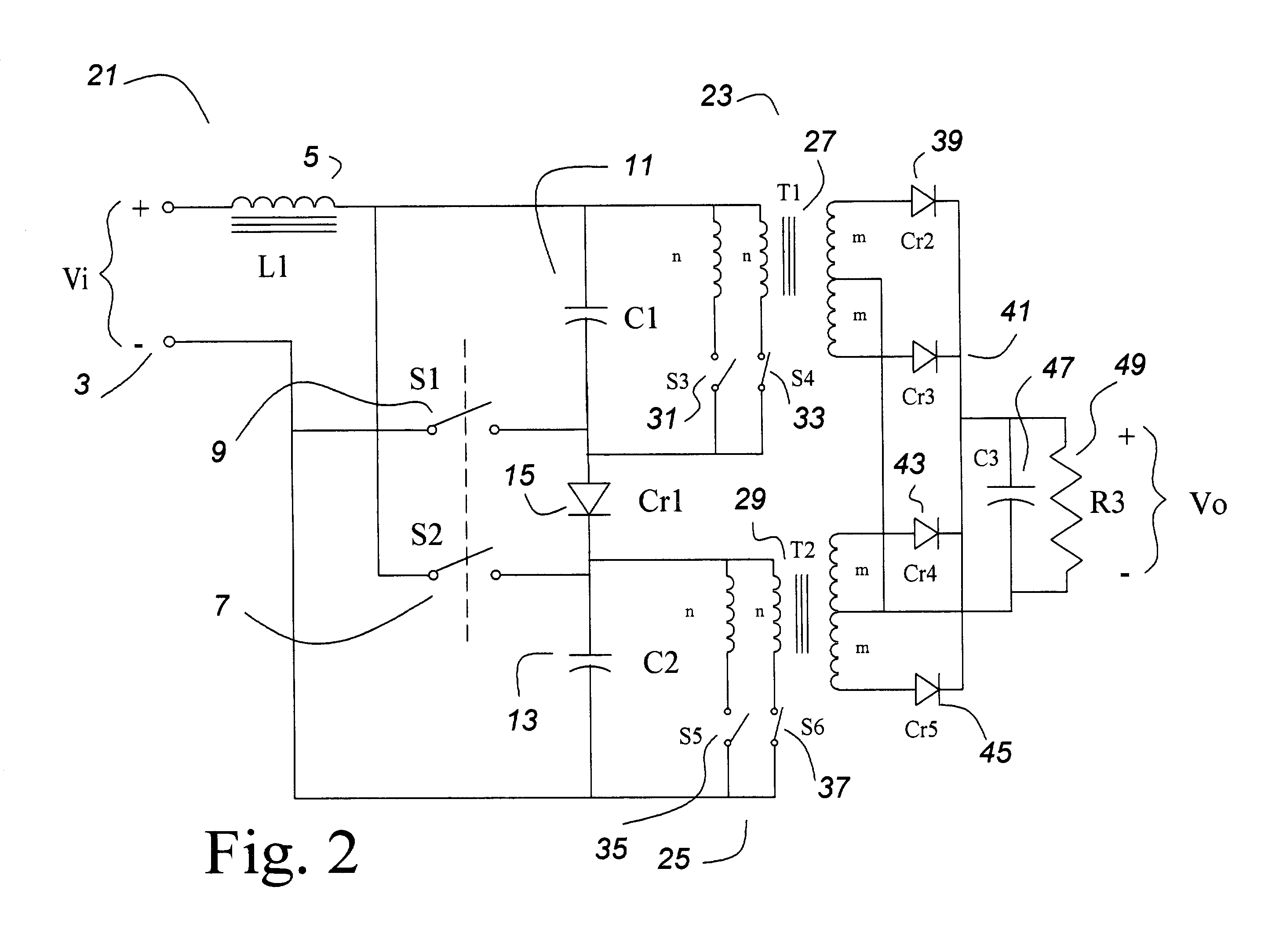Power converter with an inductor input and switched capacitor outputs
a power converter and inductor technology, applied in the direction of electric variable regulation, process and machine control, instruments, etc., can solve the problems of large step change in input current that is difficult to filter, and is not optimum for most applications with low voltage outputs, so as to expand the control range
- Summary
- Abstract
- Description
- Claims
- Application Information
AI Technical Summary
Benefits of technology
Problems solved by technology
Method used
Image
Examples
Embodiment Construction
[0015]FIG. 1 shows a power converter 1 of this invention connected to an input voltage source 3 Vi. The input voltage source 3 Vi is connected to a first terminal of an inductor 5 L1. The second terminal of the inductor 5 L1 is connected to the first terminal of a switch 7 S2, and the first terminal of a capacitor 11 C1. The second terminal of the capacitor 11 C1 is connected to the first terminal of a switch 9 S1 and the anode of a rectifier 15 Cr1. The cathode of the rectifier 15 Cr1 is connected to the first terminal of a second capacitor 13 C2 and the second terminal of the switch 7 S2. The second terminal of the switch 9 S1 and the second terminal of the second capacitor 13 C2 are connected to the return of the input voltage source 3 Vi, as more particularly shown in the schematic diagram, FIG. 1. If the input power source 3 Vi is of opposite polarity, the rectifier polarity is reversed.
[0016]Switches 9 S1 and 7 S2 preferably are operated synchronously, that is, they are both o...
PUM
 Login to View More
Login to View More Abstract
Description
Claims
Application Information
 Login to View More
Login to View More - R&D
- Intellectual Property
- Life Sciences
- Materials
- Tech Scout
- Unparalleled Data Quality
- Higher Quality Content
- 60% Fewer Hallucinations
Browse by: Latest US Patents, China's latest patents, Technical Efficacy Thesaurus, Application Domain, Technology Topic, Popular Technical Reports.
© 2025 PatSnap. All rights reserved.Legal|Privacy policy|Modern Slavery Act Transparency Statement|Sitemap|About US| Contact US: help@patsnap.com



